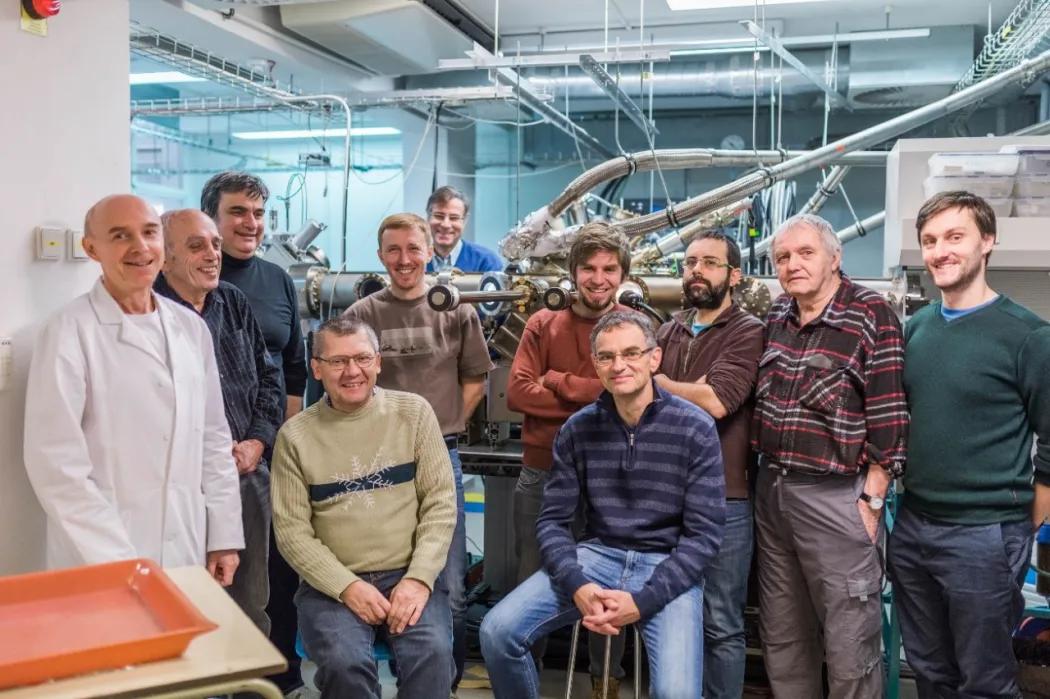The Neuron Award goes, as it has been the case several times in the past, to the Institute of Physics of the Czech Academy of Sciences. The prize, awarded in the category of significant scientific discovery in physics for 2018, was earned by Mr Tomáš Jungwirth, the head of the Spintronic and Nanoelectronics Department. Mr Jungwirth discovered the way how information is recorded in anti-ferromagnetic materials with the use of particle spin. In doing so, he laid the foundation for the use of anti-ferromagnets in spintronics, a branch of electronics which makes use of electron spin. He also contributed to the creation of a chip prototype by the use of which technology may be linked to the existing microelectronics.
Mr Tomáš Jungwirth is a well-known personality in the world of physics but he himself would like to point out that the achievements are a result of teamwork: “I think that the decision to award a prize to me separately is questionable – I may have a key coordination role in the team but the team consists of many other people."
It is the joint effort in Mr Tomáš Jungwirth's team which has the potential to extend the possibilities of the field of electronics. He and his colleagues in the ERC project are the first ones in the world to use 0MSPIN anti-ferromagnets for storing information. To record a piece of information, they made use of a special symmetry of the crystalline structure of the investigated anti-ferromagnets where – during the passage of normal electric current – virtual atomic "coils" are created, changing the spin orientation in anti-ferromagnetically arranged atoms. The speed of the process is in the order of picoseconds. The electrical reading process is easy too. For this reason, anti-ferromagnets have the potential to produce memories with a thousand times higher speed than those available today. The anti-ferromagnetic memory has other surprising qualities. For example, it is not only binary but also analogous due to which it offers potential in areas such as artificial neuron networks. Plus, not even a very strong outer magnetic field disrupts it.
More detailed information on anti-ferromagnetic memories can be found in our previous articles published earlier this year, or we recommend you a synopsis available on the Neuron Endowment Fund. The significance of this research field is also underlined by a grant which was recently received within Horizon 2020 in the framework of the Future and Emerging Technologies programme, and a grant awarded by the Grant Agency of the CR which provided support for the continuation of this research in the EXPRO programme for excellent research.
The Neuron Endowment Fund, established to support Czech scientific personalities of global significance, awards prizes every year not only to mark groundbreaking discoveries but also to value lifelong contribution to science and to support young promising scientists. It is also to promote the work of teachers as well as popularisation projects. This year’s prize was awarded to ten personalities, receiving a total of 9 million CZK.
The Neuron Endowment Fund has awarded many currents as well as former workers of the Institute of Physics: Mr Kamil Olejník, Mr Lukáš Palatinus, Ms Kateřina Falk, Mr Jindřich Kolorenč, Mr Hynek Němec, Ms Anna Fučíková, Mr Petr Hořava, Mr Bedřich Velický and Mr Jan Peřina from the Joint Optics Laboratory, run in cooperation with the Palacký University. More information about the past laureates can be found here.
Glossary:
A spin, also called angular momentum, is a vector variable, defining elementary particles, which is analogous to orbital angular momentum. In the case of some particles, such as the electron, a spin relates to magnetic moment whose direction is determined by the direction of the spin. Substances have different electron spin patterns and therefore differ in their magnetic properties
In ferromagnetic materials, spins of electrons are oriented in one direction and thus jointly contribute to the magnetization of a substance. Due to uniform spin orientation, these materials may easily be controlled, for example by a magnetic field, and are detectable. At the same time, when the recording magnetic field is switched off, the spins remain jointly and permanently fixed in the recorded direction and may thus be used to store information.
In anti-ferromagnetic substances, the direction of spin alternates from atom to atom. As a result, anti-ferromagnets show no magnetisation on the outside and have until recently been considered unusable for storing data. However, the scientists from the Institute of Physics have recently invented new methods to use anti-ferromagnets to record, read and store information, and developed an experimental device that can be connected to the regular computer and demonstrate the principle of anti-ferromagnetic memory.
